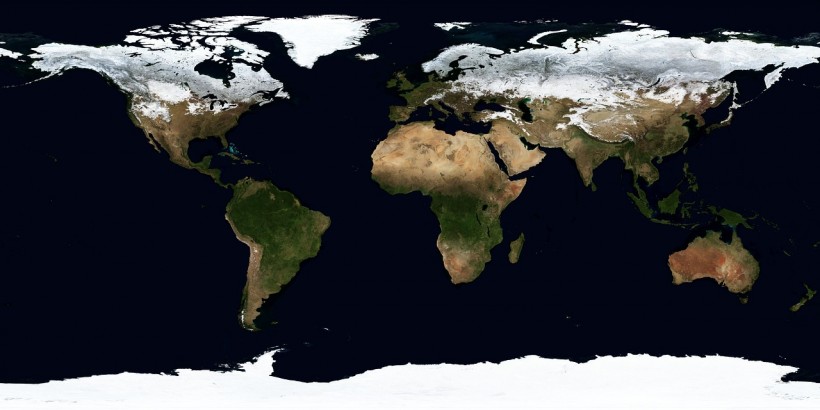The comprehension of the Earth's crust is expanded by recent research, which disproves a commonly held theory about the reason for the lower iron content and higher oxidation levels in continental crust compared to oceanic crust, Science Daily reported.
The scarcity of iron in the continental crust is a major factor in why most of Earth's surface is above sea level, allowing for the existence of land-based life. Laboratory tests were performed in the study to demonstrate that the garnet crystallization theory, proposed as a cause in 2018, is unlikely to be responsible for the iron-depleted and oxidized chemistry seen in the continental crust.

Earth Continent Formation Theory Debunked: Garnet Crystallization Did Not Drive Formation of Large Landmasses Present Today
What Is the Garnet Crystallization Explanation?
New continental crust is formed at continental arc volcanoes located at subduction zones, where an oceanic plate descends beneath a continental plate. As per Earth.com, the process of garnet crystallization in magmas underneath these volcanoes eliminates non-oxidized iron from the terrestrial plates, leading to a reduction of iron in the molten magma and an increase in its oxidation level.
The low iron content of Earth's continental crust makes it less dense and more buoyant than oceanic crust, resulting in the continents being situated higher on the mantle than the oceanic plates. This density and buoyancy difference is a major factor in why the continents are dry land and why they always come out on top in subduction zones when they meet oceanic plates.
While the garnet explanation for iron depletion and oxidation in continental arc magmas is convincing, one aspect of it has been questioned by some researchers, as per Science Daily's report. Garnet requires high pressures to remain stable, and these low-iron magmas are found in areas where the crust is not particularly thick, resulting in relatively low pressure.
Research geologist Elizabeth Cottrell from the Smithsonian's National Museum of Natural History said this finding raises doubts about the garnet explanation. The question remains whether the presence of garnet in continental arc magmas can be attributed to other factors, such as the effect of fluids on magma chemistry or some other phenomenon that has not yet been discovered.
READ ALSO: Tectonic Plate: Formation & Destruction Information Revealed By Scientists
Testing the Garnet Crystallization Theory
The team tested the garnet crystallization theory, which explains how the iron depletion and oxidation of magmas form new continental crust. Space.com reported that researchers used piston-cylinder presses located at the Smithsonian Museum's High-Pressure Laboratory and Cornell University to create massive pressure and heat similar to those found below continental arc volcanoes.
The resulting pressures were equivalent to 15,000 to 30,000 times created by Earth's atmosphere, and the temperatures generated were between 1,740 and 2,250 degrees Fahrenheit.
They conducted 13 lab tests in which samples of garnet were grown from the molten rock under pressures and temperatures similar to those inside magma chambers deep in the Earth's crust. These lab-grown garnets were then analyzed using X-ray absorption spectroscopy to reveal their composition.
The results were compared to known concentrations of oxidized and unoxidized iron in garnets, revealing that the garnets grown from rocks didn't take up enough unoxidized iron to explain the observed levels of iron depletion and oxidation in magmas.
Cottrell, the lead researcher, concluded that the garnet crystallization model is an unlikely explanation for the iron depletion and oxidation of magmas from continental arc volcanoes. She suggested that the oxidized conditions may be caused by the conditions in Earth's mantle below the continental crust.
However, the team's findings cannot provide an alternative hypothesis for the creation of continental crust, meaning the research raises more questions than it answers. The research team's findings were published in the journal Science.
RELATED ARTICLE: Scientists Found The Oldest Traces Of Earth's Original Crust in Canada
Check out more news and information on Earth Science in Science Times.














